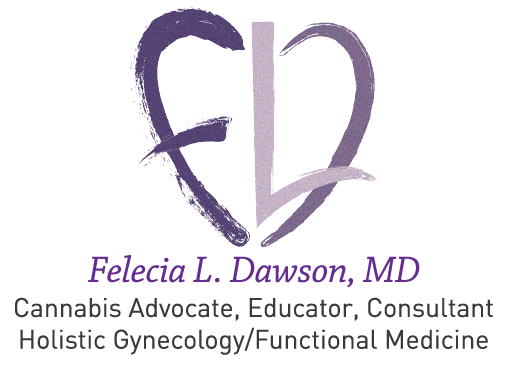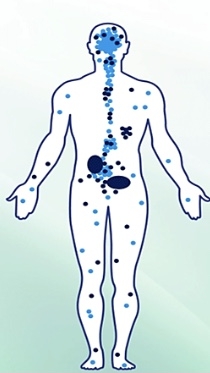As a holistic physician, I care about your body, mind and spirit. The cannabis plant can heal your body, mind and spirit. Humans have used plants as food and medicine since we’ve been on Mother Earth. Over the next few months, I will tell you about the endocannabinoid system. This system allows our physiology to interact with the cannabis plant like a hand and glove. All humans and mammals have an endocannabinoid system. It helps us maintain balance and equilibrium. It helps govern our nervous, immune, hormonal and many other systems of the body. The endocannabinoid system plays a role in everything from our ability to think, move and digest; to our ability to fight off infections and cancer; to our ability to experience pleasure. We are finding out new things about this system daily. Its initial components were discovered between 1990 and 1997 while scientists were trying to figure out why cannabis affects us the way it does. They discovered that we make molecules that resemble and behave just like the ones in the cannabis plant! Professor Di Marzo summarized the endocannabinoid system in 1998 as one that helps us “relax, eat, sleep, forget and protect”.
The abbreviation for the endocannabinoid system is ECS. We can also use the letters "E", "C", "S" to help us remember its components. “E” stands for enzymes. “C” stands for cannabinoids. “S“ stands for so many receptors!
Let’s start in reverse order. “S" stands for so many receptors! Receptors receive righteous cannabinoids. The endocannabinoid system’s receptors are the most numerous of all the systems in your body. They act like locks waiting for the keys or cannabinoids. They are distributed throughout your body from your brain to your skin, except for one place. This place is your brain stem. This is an area just below your brain that controls your heart rate and breathing. There are very few cannabinoid receptors in your brain stem. In contrast, there are many opioid receptors in the brain stem. That’s how people die of an opioid overdose. They stop breathing. This does not happen with cannabis. There has never been a death due to cannabis, EVER. The receptors are called CB1 and CB2. CB1 receptors are primarily in the brain, spinal cord and organs. CB2 receptors are found primarily in the immune and peripheral nervous systems. This brings us to the “C”.
“C“ stands for cannabinoids. Cannabinoids create calm. They are biologically active fatty molecules. Their chemical structure resembles omega-3 fatty acids or fish oil. There are three types of cannabinoids: phytocannabinoids, endocannabinoids, and synthetic cannabinoids. Phytocannabinoids are found in the cannabis plant. “Phyto” means of plants. Endocannabinoids are found within our bodies. “Endo” means inside. Synthetic cannabinoids are made by pharmaceutical companies. They are a poor substitutes for the real, whole cannabis plant. Several endocannabinoids have been discovered in humans. The first two discovered were named N-arachidonoylethanolamine (AEA) and 2-arachidonoylglycerol (2-AG). AEA was nicknamed anandamide after the Sanskrit word for bliss Our bodies are always making a baseline level of anandamide which contributes to our “endocannabinoid tone”. We will come back to this later. 2-AG, as well as anandamide, can be made on demand, when we need them. For example, if we get hurt or become ill, our production of endocannabinoids increases. The endocannabinoids act like keys and insert into the receptors (locks). That's when the magic happens. Endocannabinoids can decrease pain and inflammation. They help us sleep and lift our mood. They can kill bacteria, viruses and even cancer cells. This brings us to our last component.
“E” stands for enzymes. Enzymes enable existence. Enzymes help create reactions and molecules. They can also stop a reaction and breakdown molecules. Scientists are still working to identify the various enzymes that help create our endocannabinoids. However, we do know which ones break them down once their job is done. Fatty acid amide hydrolase (FAAH) breaks down anandamide. Monoacylglycerol lipase (MAGL) breaks down 2-AG. Do you know why we feel good when we eat dark chocolate? Dark chocolate blocks the enzyme FAAH which allows our levels of anandamide to increase. That makes us feel good!
Remember, ECS stands for the endocannabinoid system. "E", "C", "S" can also help us remember the key components of this system. "E” is for enzymes. “C” is for cannabinoids. “S” is for so many receptors! Disease manifests when our endocannabinoid system isn’t functioning properly or “endocannabinoid tone” is low. In 2004, Dr. Ethan Russo hypothesized that diseases like chronic fatigue syndrome, lupus, fibromyalgia, Alzheimer’s, migraines, anxiety, depression and even PTSD, are due to inadequate endocannabinoid system function. He called it “Clinical Endocannabinoid Deficiency Syndrome”. Research now supports his theory. This is why supplementing with phytocannabinoids or cannabis gives relief to so many people with autoimmune conditions, mood disorders and neurodegenerative diseases like those mentioned above. Over the coming months, I will discuss what you can do to improve your endocannabinoid tone.
Thomas Edison stated in 1902, “there were never so many able, active minds at work on the problems of disease as now, and all their discoveries are trending toward the simple truth, that you can’t improve on nature”. Truer words have never been spoken.




